An SUV containing gelatin sticks outside the residence of India’s richest industrialist. A small-time trader’s body being fished out of a creek. The rise and fall of an encounter specialist. A police commissioner, shunted out to a nothing post, countering with an explosive letter. Allegations against a home minister. A whole state government caught in the whirlpool…. That’s too many twists and turns for even a Ram Gopal Varma thriller. Where else but in Mumbai? And it’s not over. The controversy that started with a most unusual presence outside Mukesh Ambani’s Antilia residence on Altamount Road last month—a Scorpio laden with low-grade explosives—is tracing wider and wider circles. The plausible threads range from terror to barely legal gangland shenanigans in high places. Things took a sinister turn when Thane-based businessman Mansukh Hiran was found dead, and assistant police inspector Sachin Waze was arrested and suspended. But all that has become mere detail in a full-fledged scrap between the BJP, powered by central agencies, and the Maha Vikas Aghadi (MVA) government in Maharashtra.
The script is unfolding at two related layers. The superscript, so to speak, is political. Beneath that flows the muddied water of the actual cases. Every day, investigative agencies are revealing new pieces of evidence. In the last 15-20 days, the revelations mainly centred around Waze’s alleged involvement in the death of Hiran, who owned the Scorpio that was found with explosive cargo. Then attention swung towards another sort of detonation: former Mumbai police commissioner Param Bir Singh’s letter naming state home minister Anil Deshmukh in connection with corrupt practices. Inevitably, focus waned on the original investigation—who was behind the threat to Ambani? What was the motive? We have no answers.
ALSO READ: Param Bir Chakra
After the latest arrests—of suspended constable Vinayak Shinde and cricket bookie Naresh Gor—the Maharashtra Anti-Terrorism Squad (ATS) claims to have solved Hiran’s murder. Shinde, incidentally, had got parole in 2020—he was serving out a life imprisonment for the 2006 Lakhan Bhaiyya encounter case—and had been in touch with Waze, the ATS said. Waze himself has had a dramatic, zigzag career. One of the cabal of ‘tough cops’ who blazed a dubious trail through Mumbai’s crime history with a series of ‘encounters’—Waze had 63 under his belt—he was arrested and suspended for 17 years for the custodial death of software engineer Khwaja Yunus. Like a wily chess knight, Waze moved sideways—into politics—joining the Shiv Sena in 2008. Thus it came about that he was reinstated in 2020 by the MVA: they cited the Covid emergency as a reason. But even with new tricks, the knight perhaps remained, at heart, an old pony. There are certainly a few pawns lying strewn on the chessboard.
This is not the first time ‘encounter specialists’ have turned into a Frankenstein’s monster for politicians who patronise them to get their dirty jobs done. Maharashtra had fulsomely nurtured the culture of violent encounters in the ’90s when the underworld gang wars were at their peak. “Common people supported instant justice, and media was after TRPs. The fallout: these junior-level cops started projecting themselves as indispensable and invincible, becoming criminals in uniform. Their superiors encouraged them. Businessmen and industrialists too approached them to get things done…that brought in a lot of money. It became a parallel government, a serious threat to the system,” says Shirish Inamdar, who retired as additional deputy commissioner, Maharashtra Intelligence Department.
ALSO READ: As Good As Its Leader
It started in the 1980s, when Mumbai’s economy boomed, land prices soared and mill lands were put on sale. “The opening of new land parcels gave gangsters like Karim Lala, Ratan Khatri and Dawood Ibrahim, till then involved in smuggling, a fresh avenue to extract more money,” says senior journalist Prakash Bal. “The gangs were usually hired to get a piece of land vacated. Crime became more organised, gangs became powerful with the flow of money.” For the next 10-15 years, a tripartite network of gangs, politicians and developers ruled the city. The hunger for money was so insatiable, it inevitably created clashes among the three. That’s when the so-called encounter specialists were brought in and given a free hand—a la straight-shooting sheriffs cleaning up a bad town. Gangster Manohar alias Manya Surve’s encounter at Wadala on January 11, 1982, became the first of many high-profile cases. This heady, morally grey world of guns and grime offered a readymade spice mix to Bollywood, which invariably glorified the police. The 2013 John Abraham movie Shootout at Wadala, based on the Surve encounter, was only one in a series of adulatory ‘tough cop’ movies. Those helped bolster popular support; political support was anyway there.
In 1995, when the Shiv Sena-BJP came to power, then home minister Gopinath Munde had openly supported encounters.
It was a combustible mix. Politicians wanted money for elections and took the help of gangsters. If they went out of control, elimination followed. “Most encounters were cold-blooded murders,” says senior human rights lawyer Mihir Desai. “It would not have flourished without the government’s tacit or active approval. It was a vicious culture that made controversial cops like Waze, Daya Nayak and Pradeep Sharma.” Politics gave Waze a partial shield—Chief Minister Uddhav Thackeray tried to shield him initially by saying he was not Osama Bin Laden—but it has only boomeranged on his benefactors. Like Waze, Sharma too had been dismissed from service in 2008 and reinstated in 2017. Coincidentally, or perhaps not, he too had worked under former commissioner Param Bir Singh.
The spreading stain has enabled the Centre to dig in its talons. Its interest in Maharashtra’s law and order affairs had anyway invited allegations of being excessive. The NIA had snatched away the Bhima Koregaon probe, even if new evidence undermines its thesis. The CBI plucked away the Sushant Singh Rajput case probe—another one that seems to be petering out. Now, the NIA has taken ownership of the Ambani threat case. So the fear among MVA partners that the Centre is moving in for a checkmate is not unwarranted. BJP leaders have been demanding President’s rule in Maharashtra. Political analyst Suhas Palshikar, however, says the Centre has learned the art of controlling a state without imposing Article 356. “The latter can be challenged in the court. Instead, the Centre is using agencies like CBI and NIA to interfere without any legal repercussions.”
**
City City Bang Bang
Those who played judge, jury and executioner in Maximum City
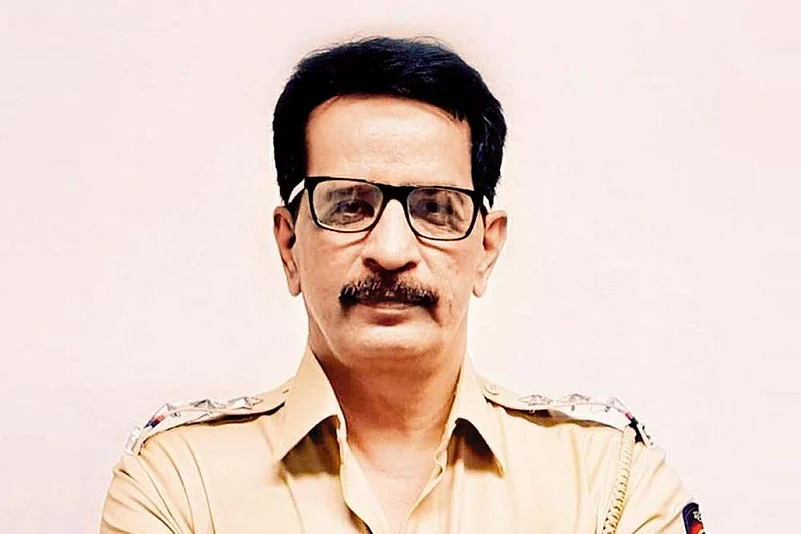
Pradeep Sharma
Starting as a sub-inspector in 1983, posted at the Mahim police station, Sharma went on to blaze a smokin’ trail—with over 100 encounter claims against him. But it was a grime-ridden canvas. In 2008, he was dismissed on charges of corruption. In 2010, he was arrested for his involvement in the Lakhan Bhaiyya case, but was acquitted in 2013. He was reinstated in 2017 and hit the news in the same year for arresting Iqbal Kaskar, brother of Dawood Ibrahim, in Mumbai. In 2019, Sharma resigned from Mumbai Police, joined the Shiv Sena and contested the assembly polls from Nalasopara seat in Palghar district. Rege, a Marathi film starring Mahesh Manjrekar, is based on his story.
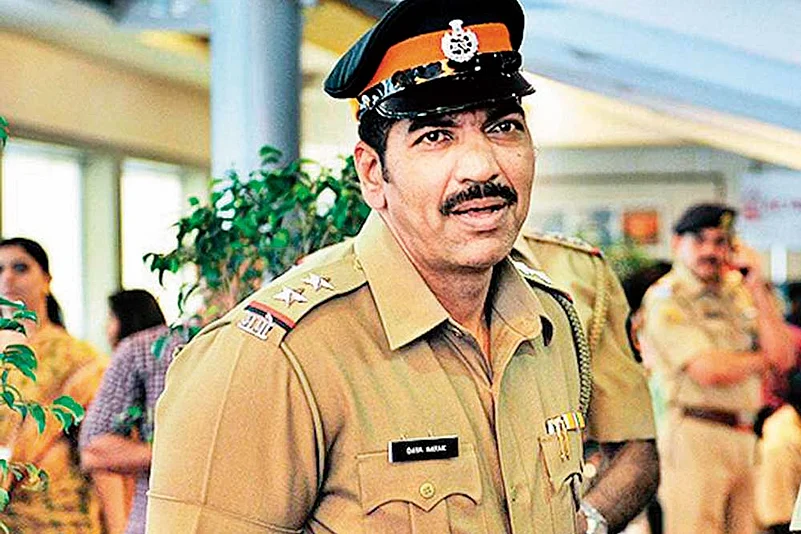
Daya Nayak
A 1995-batch police officer from Udipi, Karnataka, he notched up 83 encounter claims against him—a career path that was presumably caught somewhere in the middle in the adulatory film, Ab Tak Chhappan (literally, ‘Till Now, Fifty-Six’). His first encounters involved members of the Chhota Rajan gang. But the aura of heroism was soon tainted by allegations of disproportionate assets, extortion and underworld links. Investigated by the MCOCA court for the last one, he got a clean chit in 2004, after several inquiries. But 2006 again brought arrest and suspension—by the anti-corruption bureau. He was reinstated in 2012.
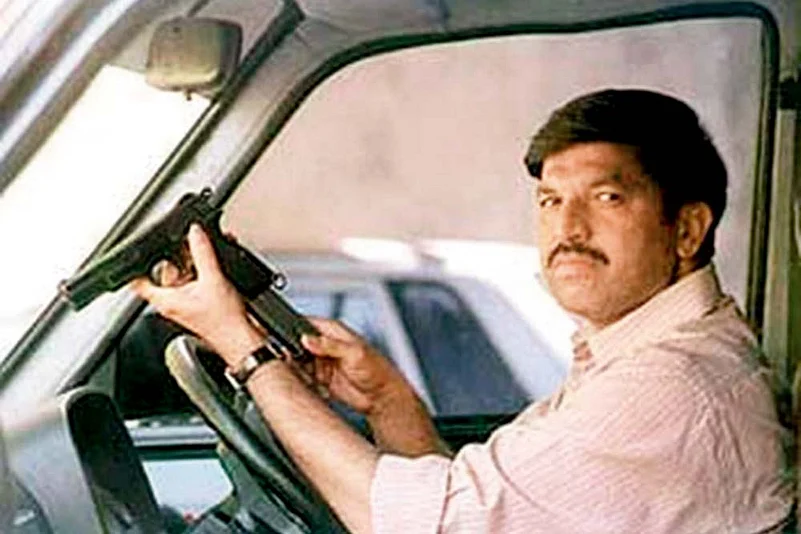
Vijay Salaskar
He joined Mumbai Police in 1983 and was said to be involved in the encounters of 75 criminals, including members of the Arun Gawli gang. He was killed during the 26/11 Mumbai terror attacks in 2008 along with then ATS chief Hemant Karkare and additional commissioner Ashok Kamte. Captured terrorist Ajmal Kasab owned up to the killing. Salaskar was honoured with the Ashoka Chakra in 2009.
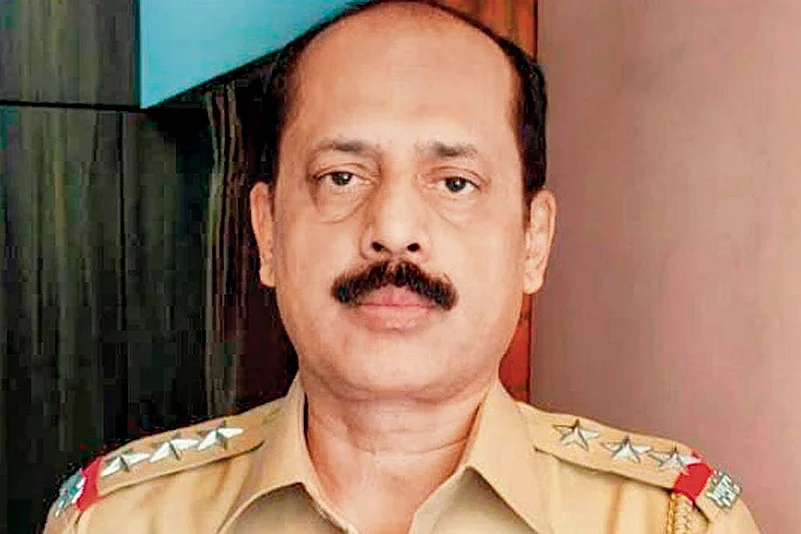
Sachin Waze
He started as a sub-inspector in the Maoist-affected Gadchiroli district in 1990. But Mumbai beckoned—the names of Chotta Rajan and Dawood Ibrahim gang-members were soon glittering on his resume, amid a total 60+ encounters. Waze was suspended for 17 years in software engineer Khwaja Yunus’s custodial death case—the police’s ‘missing’ claim being falsified by the testimony of a co-accused in the Ghatkopar blast case. He joined the Shiv Sena in 2008 and was reinstated despite having charges against him when the party came to power in 2020.
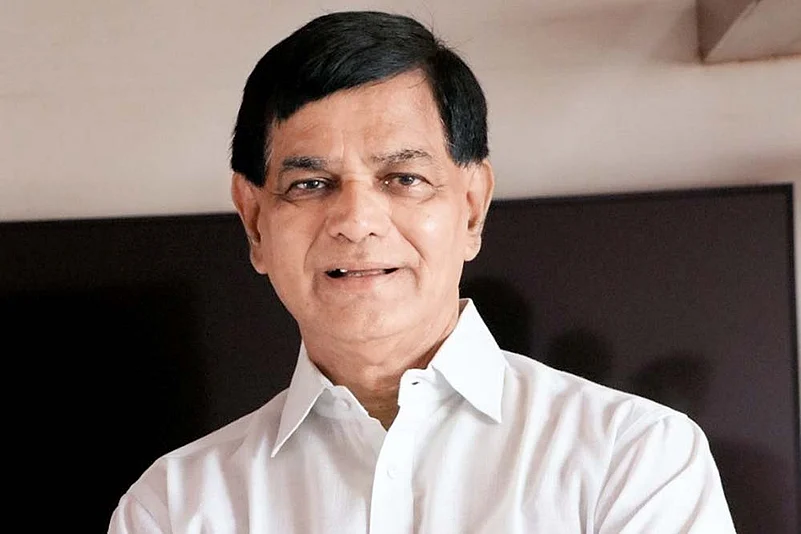
Ravindranath Angre
He joined the police force as a sub-inspector in 1983 with batchmates Vijay Salaskar and Pradeep Sharma. Angre has over 50 encounter claims against his name, but the trail was murky as usual. In 2008, he was charged with extorting a builder in Thane and arrested. He was later reinstated and transferred to Gadchiroli, a posting he refused to accept. Angre joined the BJP in 2015.
By Shruti Ganapatye in Mumbai
















